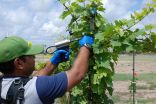Emergency department intervention does not reduce heavy drinking or partner violence
2015-08-04
(Press-News.org) A brief motivational intervention delivered during an emergency department visit did not improve outcomes for women with heavy drinking involved in abusive relationships, according to a study in the August 4 issue of JAMA, a violence/human rights theme issue.
There is a strong and reciprocal association between two highly prevalent public health problems: intimate partner violence (IPV) and heavy drinking. Each risk individually represents major costs to individuals, families, and society. The emergency department (ED) visit is conceptualized as a sensitive period or window of time when exposure to motivational health promotion might have an influence on behaviors. Integrated brief interventions for IPV and heavy drinking have not been tested, according to background information in the article.
Karin V. Rhodes, M.D., M.S., of the University of Pennsylvania, Philadelphia, and colleagues randomly assigned 600 IPV-involved female ED patients who exceeded safe drinking limits to brief intervention (n = 242), assessed control (n = 237), or no-contact control (n = 121). All received social service referrals. The brief intervention was a 20- to 30-minute manual-guided motivational intervention delivered by master's-level therapists with a follow-up telephone booster. The assessed control group received the same number of assessments as the brief intervention group but no intervention; the no-contact control group was assessed only once at 3 months.
Incidents of heavy drinking and IPV were assessed weekly for 12 weeks using an interactive voice response system. Of 600 participants, 80 percent were black women with an average age of 32 years. Retention among study participants was 89 percent for 2 or more interactive voice response system calls. Seventy-eight percent of women completed the 3-month interview, 79 percent at 6 months, and 71 percent at 12 months.
During the 12-week period following the brief motivational intervention, there were no significant differences between the intervention group and the assessed control group on weekly assessments for experiencing IPV or heavy drinking. From baseline to 12 weeks, the number of women with any IPV in the past week decreased from 57 percent in the intervention group to 43 percent and from 63 percent in the assessed control group to 41 percent (absolute difference of 8 percent; not statistically significant). From baseline to 12 weeks, the number of women with past week heavy drinking decreased from 51 percent in the intervention group to 43 percent and from 46 percent in the assessed control group to 41 percent (absolute difference of 3 percent).
At 12 months, 43 percent of the intervention group and 47 percent of the assessed control group reported no IPV during the previous 3 months and 19 percent of the intervention group and 24 percent of the control group had reduced their alcohol consumption to sex-specific National Institute on Alcohol Abuse and Alcoholism safe drinking levels.
"We did find that over time, reports of experiencing and perpetrating IPV and days of heavy drinking decreased significantly within the intervention and the control groups alike. However, there was no evidence that these outcomes were influenced by the intervention," the authors write.
The researchers note that integrated interventions that address multiple risk factors in the context of violence exposure may require a more in-depth approach than can be feasibly provided in an ED setting.
"These findings do not support a brief motivational intervention in this setting."
INFORMATION:
(doi:10.1001/jama.2015.8369; Available pre-embargo to the media at http://media.jamanetwork.com)
Editor's Note: This project was funded by an award from the National Institute on Alcohol Abuse and Alcoholism. The authors have completed and submitted the ICMJE Form for Disclosure of Potential Conflicts of Interest. Dr. Sommers reported receiving book royalties from FA Davis. No other disclosures were reported.
ELSE PRESS RELEASES FROM THIS DATE:
2015-08-04
Screening women for partner violence and providing a resource list did not influence the number of hospitalizations, emergency department, or outpatient care visits compared with women only receiving a resource list or receiving no intervention over 3 years, according to a study in the August 4 issue of JAMA, a violence/human rights theme issue.
The U.S. Preventive Services Task Force recommends women of reproductive age be screened for partner violence. However, others, such as the World Health Organization conclude there is insufficient evidence for this recommendation. ...
2015-08-04
More than 1 in 4 female sex workers in the northern Mexico cities of Tijuana and Ciudad Juarez reported entering the sex trade as minors, and entering the sex trade as an adolescent vs as an adult was associated with a greater risk for HIV infection, according to a study in the August 4 issue of JAMA, a violence/human rights theme issue.
Adolescents migrating from Central America and Mexico to the United States are at risk for being trafficked into the sex industry in Mexico's northern border cities. Research from other regions indicates that those entering the sex trade ...
2015-08-04
Researchers at University of California, San Diego School of Medicine report that more than one in four female sex workers in two Mexican cities on the U.S. border entered the sex trade younger than age 18; one in eight before their 16th birthday. These women were more than three times more likely to become infected with HIV than those who started sex work as adults. They were also three times more likely to be violently coerced to engage in sex with male clients and seven times less likely to use a condom during their first month in the sex trade.
The study is published ...
2015-08-04
Scientists have discovered how earthworms can digest plant material, such as fallen leaves, that would defeat most other herbivores.
Earthworms are responsible for returning the carbon locked inside dead plant material back into the ground. They drag fallen leaves and other plant material down from the surface and eat them, enriching the soil, and they do this in spite of toxic chemicals produced by plants to deter herbivores.
The scientists, led by Dr Jake Bundy and Dr Manuel Liebeke from Imperial College London, have identified molecules in the earthworm gut that ...
2015-08-04
WASHINGTON, D.C., August 4, 2015 -- Terahertz radiation, the no-man's land of the electromagnetic spectrum, has long stymied researchers. Optical technologies can finagle light in the shorter-wavelength visible and infrared range, while electromagnetic techniques can manipulate longer-wavelength radiation like microwaves and radio waves. Terahertz radiation, on the other hand, lies in the gap between microwaves and infrared, whether neither traditional way to manipulate waves works effectively. As a result, creating coherent artificial sources of terahertz radiation in ...
2015-08-04
WASHINGTON, D.C., August 4, 2015 -- Studies of the impact a droplet makes on solid surfaces hark back more than a century. And until now, it was generally believed that a droplet's impact on a solid surface could always be separated into two phases: spreading and retracting.
But it's much more complex than that, as a team of researchers from City University of Hong Kong, Ariel University in Israel, and Dalian University of Technology in China report in the journal Applied Physics Letters, from AIP Publishing.
"During the spreading phase, the droplet undergoes an inertia-dominant ...
2015-08-04
UBC scientists have opened the doors to new research into malnutrition by creating an animal model that replicates the imbalance of gut bacteria associated with the difficult-to-treat disease.
Malnutrition affects millions of people worldwide and is responsible for one-fifth of deaths in children under the age of five. Children can also experience impaired cognitive development and stunted growth.
The problem arises when people don't have enough food to eat and their diet lacks proper nutrients. The disease also has a lot to do with environmental factors and it has ...
2015-08-04
In vitro studies of the cellular effects of modeled osteopathic manipulative therapy (OMT) provide proof of concept for the manual techniques practiced by doctors of osteopathic medicine (DOs), according to researchers from the University of Arizona College of Medicine - Phoenix.
The study, published in The Journal of the American Osteopathic Association, focused on modeling two common OMT techniques, myofascial release and counterstrain. Researchers subjected fibroblast matrices to various strains and employed a scratch wound strain model to test the ability of OMT ...
2015-08-04
A new strain of yeast called Yarrowia lipolytica Y-3492 was found to be very active in waste water treatment. The discovery was made by by microbiologists from Kazan Federal University during their research at Western Siberian peat bogs.
The strain is said to be effective against nitro compounds which are used in explosives, herbicides, insecticides, polymers, dyes, and some medications. Oil refineries and military equipment plants produce especially high amounts of such waste. The research was conducted with the use of widely known trinitrotoluene (TNT).
It is well-known ...
2015-08-04
COLLEGE STATION -- It's happy hour at a lab in College Station. The cocktail of choice, developed by scientists with Texas A&M AgriLife Research, is one that stops or prevents the deadly Pierce's disease on wine grapes.
The discovery could turn a new leaf on the multimillion-dollar U.S. wine industry. Hear, hear.
The study, published in the academic journal PLOS ONE, describes the use of four bacteriophages that were identified for their ability to attack the bacteria that causes the devastating disease in grapes and several other plants.
A bacteriophage, or phage, ...
LAST 30 PRESS RELEASES:
[Press-News.org] Emergency department intervention does not reduce heavy drinking or partner violence




